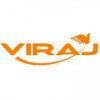Filter interviews by
Jindal Steel and Power Electrical Maintenance Technician Interview Questions and Answers for Experienced
12 Interview questions
MCB stands for Miniature Circuit Breaker.
MCB is an electrical switch that automatically interrupts the flow of current in an electrical circuit during an overload or short circuit.
It is a type of circuit breaker that is commonly used in residential and commercial buildings.
MCBs are designed to protect electrical circuits and appliances from damage caused by excessive current.
They are compact in size and can be eas...
A timer is a device or software that measures and controls the passage of time.
A timer can be a physical device with buttons and a display, or it can be a software program on a computer or smartphone.
Timers are commonly used in various applications such as cooking, sports, and industrial processes.
They can be set to count down from a specific time or count up from zero.
Some timers have additional features like ala...
PLC stands for Programmable Logic Controller. It is a digital computer used for automation of electromechanical processes.
PLC is used to control and monitor industrial processes.
It is programmed using ladder logic or other programming languages.
PLCs are commonly used in manufacturing, power plants, and transportation systems.
They can be used to control motors, valves, sensors, and other devices.
PLCs provide real-t...
VFD stands for Variable Frequency Drive.
VFD is an electronic device used to control the speed and torque of an electric motor.
It adjusts the frequency and voltage supplied to the motor, allowing for precise control of motor speed.
VFDs are commonly used in industrial applications to save energy, improve motor performance, and enable soft starting and stopping.
They are also known as AC drives, adjustable speed drive...
What people are saying about Jindal Steel and Power






An AC motor is a type of electric motor that operates on alternating current.
AC motor stands for Alternating Current motor.
It converts electrical energy into mechanical energy.
AC motors are commonly used in household appliances, industrial machinery, and vehicles.
They are more efficient and require less maintenance compared to DC motors.
Examples of AC motors include induction motors, synchronous motors, and brushl...
A diode is an electronic component that allows current to flow in one direction and blocks it in the opposite direction.
Diodes are commonly used in rectifier circuits to convert AC to DC.
They have two terminals: an anode (positive) and a cathode (negative).
When the voltage across a diode is forward-biased, it allows current to flow.
When the voltage is reverse-biased, it blocks the current.
Diodes are often used for...
A rectifier is an electrical device that converts alternating current (AC) to direct current (DC).
Rectifiers are commonly used in power supplies to convert AC voltage to DC voltage.
They are made up of diodes, which allow current to flow in only one direction.
Rectifiers can be half-wave or full-wave, depending on the number of diodes used.
Examples of rectifiers include bridge rectifiers, vacuum tube rectifiers, and...
PLC stands for Programmable Logic Controller. It is a digital computer used for automation of electromechanical processes.
PLC is a specialized computer designed to control industrial processes.
It uses a programmable memory to store instructions and execute them in a sequential manner.
PLCs are commonly used in manufacturing plants, power stations, and other industrial settings.
They can be programmed to control vari...
A timer is a device that measures and controls the passage of time.
A timer is used to initiate or stop a process at a specific time or after a specific duration.
Timers can be mechanical or electronic.
They are commonly used in various applications such as appliances, industrial machinery, and automation systems.
Examples of timers include kitchen timers, programmable thermostats, and countdown timers in sports event...
AC motors and DC motors differ in their power source, construction, speed control, and applications.
AC motors run on alternating current, while DC motors run on direct current.
AC motors are more commonly used in household appliances, industrial machinery, and electric vehicles.
DC motors are often found in battery-powered devices, such as laptops, electric cars, and robots.
AC motors have a simpler construction with...
Jindal Steel and Power Electrical Maintenance Technician Interview Experiences for Experienced
1 interview found
(13 Questions)
- Q1. What is relay what do work
- Ans.
A relay is an electrical device that acts as a switch to control the flow of current in an electrical circuit.
Relays are used to control high-power devices with low-power signals.
They consist of an electromagnet and a set of contacts.
When the electromagnet is energized, it creates a magnetic field that attracts or releases the contacts, allowing or interrupting the flow of current.
Relays are commonly used in industrial...
- Q2. What is reverse forward draw the control wirring
- Ans.
Reverse forward draw is a control wiring method used in electrical systems to control the direction of rotation of a motor.
Reverse forward draw is used to control the direction of rotation of a motor.
It involves the use of a forward contactor and a reverse contactor.
The control wiring includes connections between the contactors, motor, and power supply.
By energizing the forward contactor, the motor rotates in one direc...
- Q3. What is ac motor
- Ans.
An AC motor is a type of electric motor that operates on alternating current.
AC motor stands for Alternating Current motor.
It converts electrical energy into mechanical energy.
AC motors are commonly used in household appliances, industrial machinery, and vehicles.
They are more efficient and require less maintenance compared to DC motors.
Examples of AC motors include induction motors, synchronous motors, and brushless m...
- Q4. What is different between ac and dc motor
- Ans.
AC motors and DC motors differ in their power source, construction, speed control, and applications.
AC motors run on alternating current, while DC motors run on direct current.
AC motors are more commonly used in household appliances, industrial machinery, and electric vehicles.
DC motors are often found in battery-powered devices, such as laptops, electric cars, and robots.
AC motors have a simpler construction with fewe...
- Q5. What is. MCB
- Ans.
MCB stands for Miniature Circuit Breaker.
MCB is an electrical switch that automatically interrupts the flow of current in an electrical circuit during an overload or short circuit.
It is a type of circuit breaker that is commonly used in residential and commercial buildings.
MCBs are designed to protect electrical circuits and appliances from damage caused by excessive current.
They are compact in size and can be easily i...
- Q6. What is timer what do work
- Ans.
A timer is a device that measures and controls the passage of time.
A timer is used to initiate or stop a process at a specific time or after a specific duration.
Timers can be mechanical or electronic.
They are commonly used in various applications such as appliances, industrial machinery, and automation systems.
Examples of timers include kitchen timers, programmable thermostats, and countdown timers in sports events.
- Q7. What is VFD
- Ans.
VFD stands for Variable Frequency Drive.
VFD is an electronic device used to control the speed and torque of an electric motor.
It adjusts the frequency and voltage supplied to the motor, allowing for precise control of motor speed.
VFDs are commonly used in industrial applications to save energy, improve motor performance, and enable soft starting and stopping.
They are also known as AC drives, adjustable speed drives, or...
- Q8. What is PLC what do work
- Ans.
PLC stands for Programmable Logic Controller. It is a digital computer used for automation of electromechanical processes.
PLC is a specialized computer designed to control industrial processes.
It uses a programmable memory to store instructions and execute them in a sequential manner.
PLCs are commonly used in manufacturing plants, power stations, and other industrial settings.
They can be programmed to control various d...
- Q9. What is ac motor
- Ans.
An AC motor is a type of electric motor that operates on alternating current.
AC motor stands for alternating current motor.
It converts electrical energy into mechanical energy.
AC motors are commonly used in household appliances, industrial machinery, and vehicles.
They are more efficient and require less maintenance compared to DC motors.
Examples of AC motors include induction motors, synchronous motors, and brushless m...
- Q10. What is rectifier
- Ans.
A rectifier is an electrical device that converts alternating current (AC) to direct current (DC).
Rectifiers are commonly used in power supplies to convert AC voltage to DC voltage.
They are made up of diodes, which allow current to flow in only one direction.
Rectifiers can be half-wave or full-wave, depending on the number of diodes used.
Examples of rectifiers include bridge rectifiers, vacuum tube rectifiers, and soli...
- Q11. What is. diode
- Ans.
A diode is an electronic component that allows current to flow in one direction and blocks it in the opposite direction.
Diodes are commonly used in rectifier circuits to convert AC to DC.
They have two terminals: an anode (positive) and a cathode (negative).
When the voltage across a diode is forward-biased, it allows current to flow.
When the voltage is reverse-biased, it blocks the current.
Diodes are often used for volt...
- Q12. What is plc working
- Ans.
PLC stands for Programmable Logic Controller. It is a digital computer used for automation of electromechanical processes.
PLC is used to control and monitor industrial processes.
It is programmed using ladder logic or other programming languages.
PLCs are commonly used in manufacturing, power plants, and transportation systems.
They can be used to control motors, valves, sensors, and other devices.
PLCs provide real-time m...
- Q13. What is timer
- Ans.
A timer is a device or software that measures and controls the passage of time.
A timer can be a physical device with buttons and a display, or it can be a software program on a computer or smartphone.
Timers are commonly used in various applications such as cooking, sports, and industrial processes.
They can be set to count down from a specific time or count up from zero.
Some timers have additional features like alarms, ...
Interview Preparation Tips
Skills evaluated in this interview
Interview questions from similar companies

I applied via Referral and was interviewed before Aug 2021. There was 1 interview round.
(1 Question)
- Q1. What is DC and AC motors
- Ans.
DC motors use direct current to generate rotational motion, while AC motors use alternating current.
DC motors have a commutator and brushes to switch the current direction
AC motors have a stator and rotor to create a rotating magnetic field
DC motors are commonly used in household appliances and electric vehicles
AC motors are commonly used in industrial machinery and HVAC systems
Interview Preparation Tips

Electrical Engineer Interview Questions & Answers
Shyam Steel Industriesposted on 27 Jun 2023
I applied via Recruitment Consulltant and was interviewed in May 2023. There were 3 interview rounds.

(5 Questions)
- Q1. Electrical materials
- Q2. Power system protection
- Q3. Electrical energy system
- Q4. High voltage direct current
- Q5. Electrical control system
(1 Question)
- Q1. Electrical management
Interview Preparation Tips

I appeared for an interview before Jun 2024, where I was asked the following questions.
- Q1. What is the working principle of induction furnace?
- Ans.
An induction furnace uses electromagnetic induction to heat and melt metals efficiently and precisely.
Works on the principle of electromagnetic induction, where alternating current generates a magnetic field.
The magnetic field induces eddy currents in the metal charge, causing it to heat up due to resistance.
Commonly used for melting ferrous and non-ferrous metals, such as steel and aluminum.
Induction furnaces are ener...
- Q2. What happen if gate to cathode value is greater 30 mohm?
- Ans.
A gate-to-cathode value over 30 mohm can indicate potential issues in circuit performance and component reliability.
Higher resistance can lead to increased power loss in the circuit.
It may cause slower switching speeds in semiconductor devices.
In power electronics, it can affect the efficiency of converters.
Example: In MOSFETs, a high gate-to-cathode resistance can lead to inadequate gate drive, affecting performance.
- Q3. Which type of motor used on cranes.
- Ans.
Cranes typically use electric motors, especially AC motors, for their efficiency and control in heavy lifting applications.
AC motors are commonly used due to their durability and efficiency.
DC motors can also be used for precise control in smaller cranes.
Synchronous motors are preferred for high-speed applications.
Example: Electric hoists in overhead cranes often use three-phase AC motors.
Interview Preparation Tips
What people are saying about Jindal Steel and Power







I applied via Company Website and was interviewed in Jul 2021. There was 1 interview round.
Interview Questionnaire
1 Question
- Q1. About Weighfeeder
Interview Preparation Tips

I applied via Company Website and was interviewed in Nov 2020. There were 3 interview rounds.
Interview Questionnaire
1 Question
- Q1. About electrical and from hbo operator plus transformer working principal
Interview Preparation Tips

Electrical Engineer Interview Questions & Answers
Viraj Profilesposted on 11 Jul 2024
I applied via Walk-in and was interviewed before Jul 2023. There were 2 interview rounds.
(1 Question)
- Q1. Based on previous practical experience and knowledge
(2 Questions)
- Q1. Why are leaving your previous company
- Q2. Why should I hair you

Electrical Engineer Interview Questions & Answers
Viraj Profilesposted on 16 Apr 2023

(2 Questions)
- Q1. Transformer me dub-11 ka matalab kya hota hai
- Ans. Maine btaya “d” ka matalab Maine btaya transformer ka primary winding delta connect and “y” ka matalab Maine btaya transformer ka secondary winding star me connect hoti hai and “11” ka matalab hota hai transformer ka phase angle
- Q2. What is thyrestor
- Ans.
A thyristor is a semiconductor device that acts as a switch and can handle high voltages and currents.
It has three terminals: anode, cathode, and gate
It can be turned on by applying a small current to the gate terminal
It can handle high power and is commonly used in power control applications
Examples include AC motor speed control, lighting dimming, and power supplies
Interview Preparation Tips

I applied via Company Website and was interviewed before Oct 2023. There were 2 interview rounds.
(2 Questions)
- Q1. Introduction about you
- Ans.
I am a dedicated and experienced Electrical Engineer with a passion for problem-solving and innovation.
Graduated with a degree in Electrical Engineering from XYZ University
Completed internships at ABC Company and DEF Corporation
Proficient in CAD software and circuit design
Led a team in developing a new power distribution system for a commercial building
- Q2. Discussion about roles
(2 Questions)
- Q1. Plc,drive,basic knowledge
- Q2. Motor related questions
Interview Preparation Tips

I applied via Naukri.com and was interviewed in Dec 2022. There were 4 interview rounds.

(3 Questions)
- Q1. Electrical maintainence
- Q2. Transfomer realated question
- Q3. Transformer realated
(3 Questions)
- Q1. Motor maintainence realated
- Q2. Motor working type question
- Q3. Related to power plant
Realated to electrical maintainence
Interview Preparation Tips
Site engineer.
Jindal Steel and Power Interview FAQs
Tell us how to improve this page.
Jindal Steel and Power Interviews By Designations
- Jindal Steel and Power Junior Engineer Interview Questions
- Jindal Steel and Power Assistant Manager Interview Questions
- Jindal Steel and Power Graduate Engineer Trainee (Get) Interview Questions
- Jindal Steel and Power Deputy Manager Interview Questions
- Jindal Steel and Power Electrical Engineer Interview Questions
- Jindal Steel and Power Electrician Interview Questions
- Jindal Steel and Power Assistant Engineer Interview Questions
- Jindal Steel and Power Manager Interview Questions
- Show more
Interview Questions for Popular Designations
- Electrical Engineer Interview Questions
- Electrical Technician Interview Questions
- Senior Technician Interview Questions
- Maintenance Electrician Interview Questions
- Maintenance Technician Interview Questions
- Senior Electrical Technician Interview Questions
- Electrician Maintenance Technician Interview Questions
- Electrical Maintenance Supervisor Interview Questions
- Show more
Overall Interview Experience Rating
based on 1 interview experience
Interview Questions from Similar Companies

Jindal Steel and Power Electrical Maintenance Technician Reviews and Ratings
based on 2 reviews
Rating in categories
|
Assistant Manager
2.4k
salaries
| ₹6 L/yr - ₹14 L/yr |
|
Junior Engineer
1.1k
salaries
| ₹2 L/yr - ₹5.6 L/yr |
|
Deputy Manager
975
salaries
| ₹9.7 L/yr - ₹16.5 L/yr |
|
Assistant Engineer
835
salaries
| ₹3.8 L/yr - ₹8.4 L/yr |
|
Manager
645
salaries
| ₹13.1 L/yr - ₹22 L/yr |

Tata Steel

JSW Steel

ArcelorMittal Nippon Steel

Jindal Stainless
- Home >
- Interviews >
- Jindal Steel and Power Interview Questions >
- Jindal Steel and Power Interview Questions for Experienced










